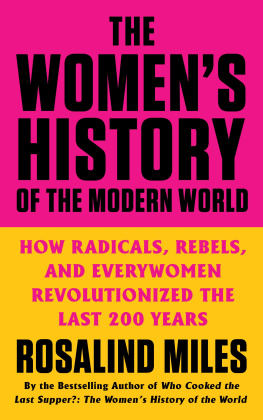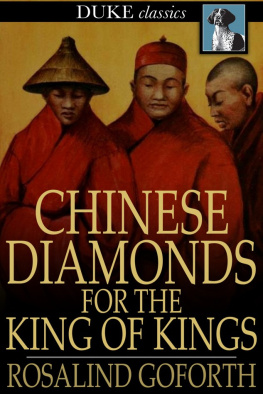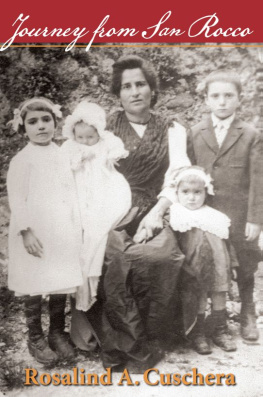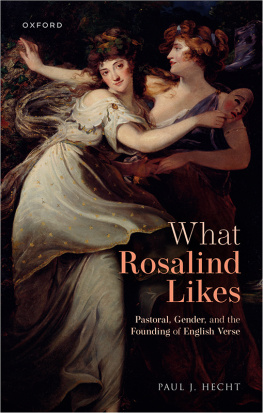Rosalind Miles - The Womens History of the Modern World
Here you can read online Rosalind Miles - The Womens History of the Modern World full text of the book (entire story) in english for free. Download pdf and epub, get meaning, cover and reviews about this ebook. year: 2020, publisher: William Morrow Paperbacks, genre: Romance novel. Description of the work, (preface) as well as reviews are available. Best literature library LitArk.com created for fans of good reading and offers a wide selection of genres:
Romance novel
Science fiction
Adventure
Detective
Science
History
Home and family
Prose
Art
Politics
Computer
Non-fiction
Religion
Business
Children
Humor
Choose a favorite category and find really read worthwhile books. Enjoy immersion in the world of imagination, feel the emotions of the characters or learn something new for yourself, make an fascinating discovery.
- Book:The Womens History of the Modern World
- Author:
- Publisher:William Morrow Paperbacks
- Genre:
- Year:2020
- Rating:5 / 5
- Favourites:Add to favourites
- Your mark:
- 100
- 1
- 2
- 3
- 4
- 5
The Womens History of the Modern World: summary, description and annotation
We offer to read an annotation, description, summary or preface (depends on what the author of the book "The Womens History of the Modern World" wrote himself). If you haven't found the necessary information about the book — write in the comments, we will try to find it.
The Womens History of the Modern World — read online for free the complete book (whole text) full work
Below is the text of the book, divided by pages. System saving the place of the last page read, allows you to conveniently read the book "The Womens History of the Modern World" online for free, without having to search again every time where you left off. Put a bookmark, and you can go to the page where you finished reading at any time.
Font size:
Interval:
Bookmark:
For all the women of the world
who are making their own history
Who was the all-time top goal scorer in the Football World Cup? None other than the aptly named quicksilver forward of the Brazilian womens team, Marta Vieira da Silva, who is changing history and making it anew. When I was a girl we never played football, and never thought we could. It was only one of the many ways that horizons were narrowing for girls at the same time as they were expanding for boys, a situation that was not expected to change.
As a child, I cannot remember when I realized that to most people, girls were less important than boys. Expecting a baby, I discovered that all pregnant women were called Mother by the medical staff. Leaving college and trying to get a job, I was routinely asked, Youve got a wonderful husband and two lovely children, what are you compensating for?
Events like these are less likely to happen now that women have begun rebelling against their long-established role as adjuncts to the lives of men and children, and have emerged as strong and significant in their own right. This striking and exhilarating change has been the work of the women we celebrate in this book, even as we share the rewards of their determination and pluck. Rebel women have spent the last two hundred years thinking the unthinkable, dreaming of change, and making it come true. A female premier? A female president? A female pope? Why not?
It has been a thrilling task to track the stories of these extraordinary women who are no longer voices singing in the wilderness like the change-makers of former times, but have banded together to remake our world. The freedom they have won for women has been in an unofficial alliance with other groups, including good men, when liberating girls from the narrow demands of compulsory wife-and-motherhood has allowed boys too to choose a different path. The womens movement has grown up and come of age in the same era as the wider LGBTQ+ community, Black Lives Matter, anti-racist protests, and calls for diversity, all creating a more inclusive and a better society for us all.
Such a wide canvas had to be selective and I had to leave out so many of my own heroines that I can only apologize if I have omitted yours. I aimed to achieve a balance between those who are household names and the many women who are less well-known, in the hope of encouraging readers to follow their trail, and that of all the others who have been lost to us and gone unnoticed by the history books. I accept that readers may find this account concentrates heavily on the Western world, which is my area of study, but I do not present it as definitive. On the contrary, I hope it will galvanize as many as possible to recount their own version of events. We need history from all perspectives. Liberating women is a work in progress. I want this to be a story that inspires others to take the history of women further and higher in our emergence from centuries in the shadows to the broad light of day.
Some readers may feel that this is not real history, because like my previous Womens History of the World, published in America as Who Cooked the Last Supper?, it makes no pretense to the traditional historical fiction of impartiality. Others might feel that it is unfair to men. I can only make the same defense that I made then, echoing the pioneer womens historian Mary Ritter Beard, who faced the same charges and made this robust response: There is sure to be an over-emphasis in places, but my apology is that when conditions have been long weighted too much on one side, it is necessary to bear down heavily on the other.
In the twenty-first century we are looking forward to a world that offers a myriad of opportunities to follow in the footsteps of my rebel women. These are the lamplighters who have gone before to show us the way, and we must not let them down. Let us not rest till all of us are free. The worlds future must be better than its past.
Rosalind Miles
As I sat watching Everyman at the Charterhouse, I said to myself Why not Everywoman?
GEORGE BERNARD SHAW
Bliss was it in that dawn to be alive.
WILLIAM WORDSWORTH
So you think revolutions can be made with rosewater?
SBASTIEN-ROCH NICOLAS DE CHAMFORT
The position of women in the [civil rights] movement is prone.
STOKELY CARMICHAEL
Prone, said the man.
Was she facedown that day, or faceup? Staring into the basket of blood-soaked severed heads where her own would shortly drop, or strapped to the board on her back, looking up at the blade as it fell?
It was the French Revolution, the dawning of the modern age. For women, it promised the best and swiftly delivered the worst. This forty-five-year-old met her death with her thick black hair hacked off in clumps to bare her neck for the blade, the common treatment for condemned women including the queen, Marie Antoinette. When so many were killed that the cobbles of Paris were sticky with their blood, most women died unknown and unnamed. But this guillotine on this dank day of November 3, 1793, sliced through the neck and silenced the brain of one of the most original thinkers of the time, Olympe de Gouges.
Her last moments were recorded by an anonymous Parisian:
Yesterday, at seven oclock in the evening, a most extraordinary person called Olympe de Gouges who held the imposing title of woman of letters, was taken to the scaffold...
She approached the scaffold with a calm and serene expression on her face, and forced the guillotines furies, which had driven her to this place of torture, to admit that such courage and beauty had never been seen before... That woman... had thrown herself in the Revolution, body and soul. But having quickly perceived how atrocious the system adopted by the Jacobins was, she chose to retrace her steps. She attempted to unmask the villains through the literary productions which she had printed and put up. They never forgave her, and she paid for her carelessness with her head.
The reason for the death of de Gouges lay in the slogan that set out the aims of the Revolution: Libert, galit, Fraternit. Under this banner the revolutionaries rising up against the monarchy paraded their wares, promising citizenship, comradeship, and freedom from tyranny, all three on offer for the first time in French history. But any hopes the women of France might have entertained of liberty or equality were soon crushed. One by one they had to face the reality every revolution delivers sooner or later, that when freedom is given out, women are not in the queue. Both liberty and equality are restricted to, and controlled by, the universal fraternity of men.
That hard truth had been forced down the throats of the women of America only fourteen years earlier, when the War of Independence broke out in 1775. This eight-year conflict, a crucial forerunner to the French Revolution, saw many rebel women fighting on the front line alongside men. They died like men too, either in battle or from combat diseases like typhoid fever or infected wounds. The she-soldier Deborah Sampson, who enlisted in the Fourth Massachusetts Regiment at the age of twenty-one, showed the courage that made the nation when she dug out a musket ball lodged in her groin with her penknife and sewed up the wound afterward, all without benefit of anesthesia.
A few of these female patriots fought as women, usually if they had a husband or brother at their side. But most found it expedient to disguise themselves as men, whatever the risk of discovery. In the ranks, Sampsonwho adopted the alias of Robert Shirtliffwas teased for her lack of facial hair and nicknamed Molly, a slang term for a gay or effeminate male. Undeterred, she proved her worth not only in battle but as the leader of dangerous reconnaissance expeditions, scouting targets for attack so important that they were chosen by the commander in chief of the army, George Washington, himself. She was only discovered during an epidemic of camp fever, when she was too ill to resist the army doctors examination, but her valor was recognized. Honorably discharged in October 1783, Sampson married, had three children, and later became the only woman soldier of the Continental Army to be granted a full military pension. Another world first was achieved by her widowed husband when he petitioned for spousal rights to Sampsons pension after her death in 1867and won.
Font size:
Interval:
Bookmark:
Similar books «The Womens History of the Modern World»
Look at similar books to The Womens History of the Modern World. We have selected literature similar in name and meaning in the hope of providing readers with more options to find new, interesting, not yet read works.
Discussion, reviews of the book The Womens History of the Modern World and just readers' own opinions. Leave your comments, write what you think about the work, its meaning or the main characters. Specify what exactly you liked and what you didn't like, and why you think so.













